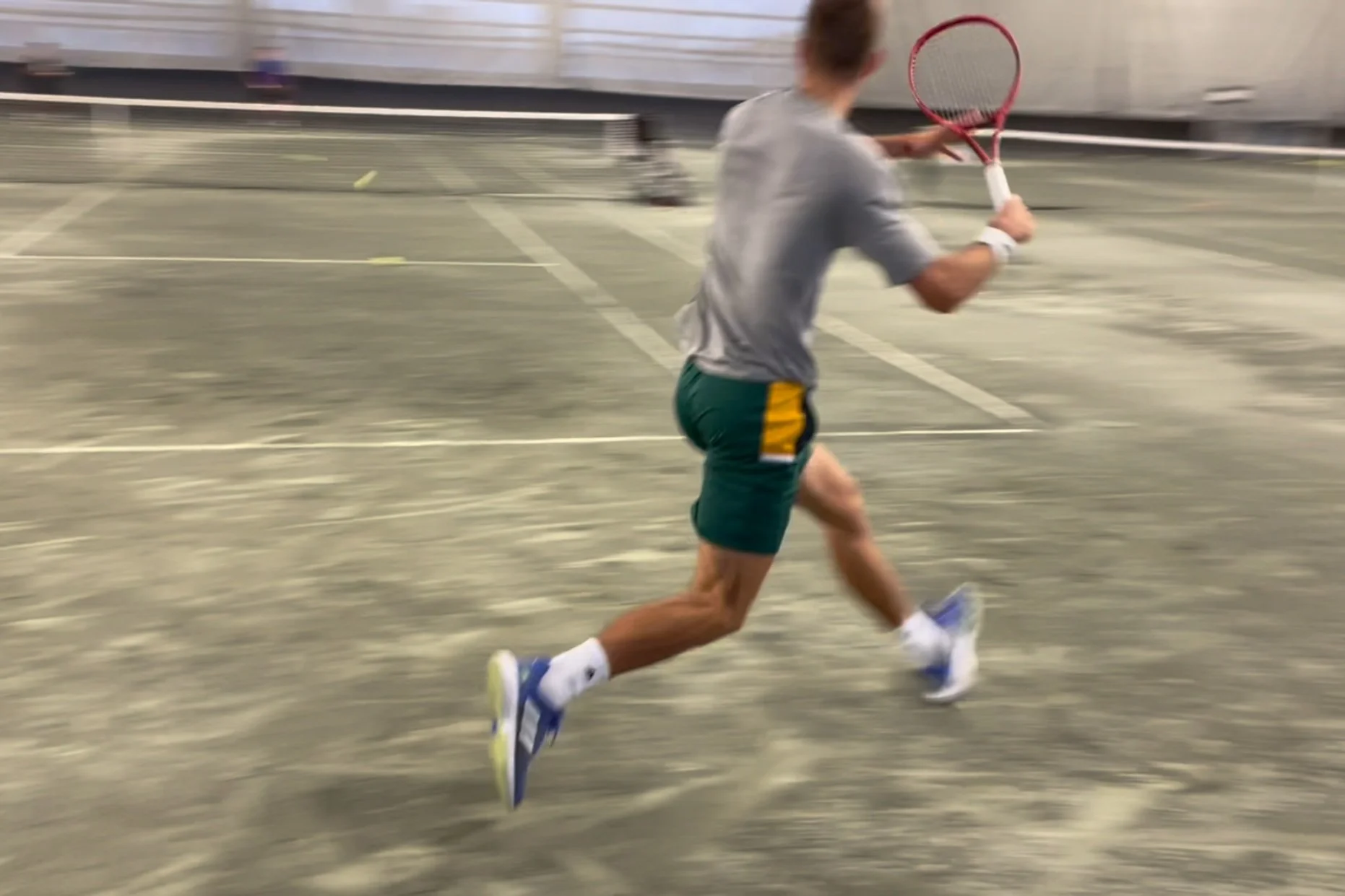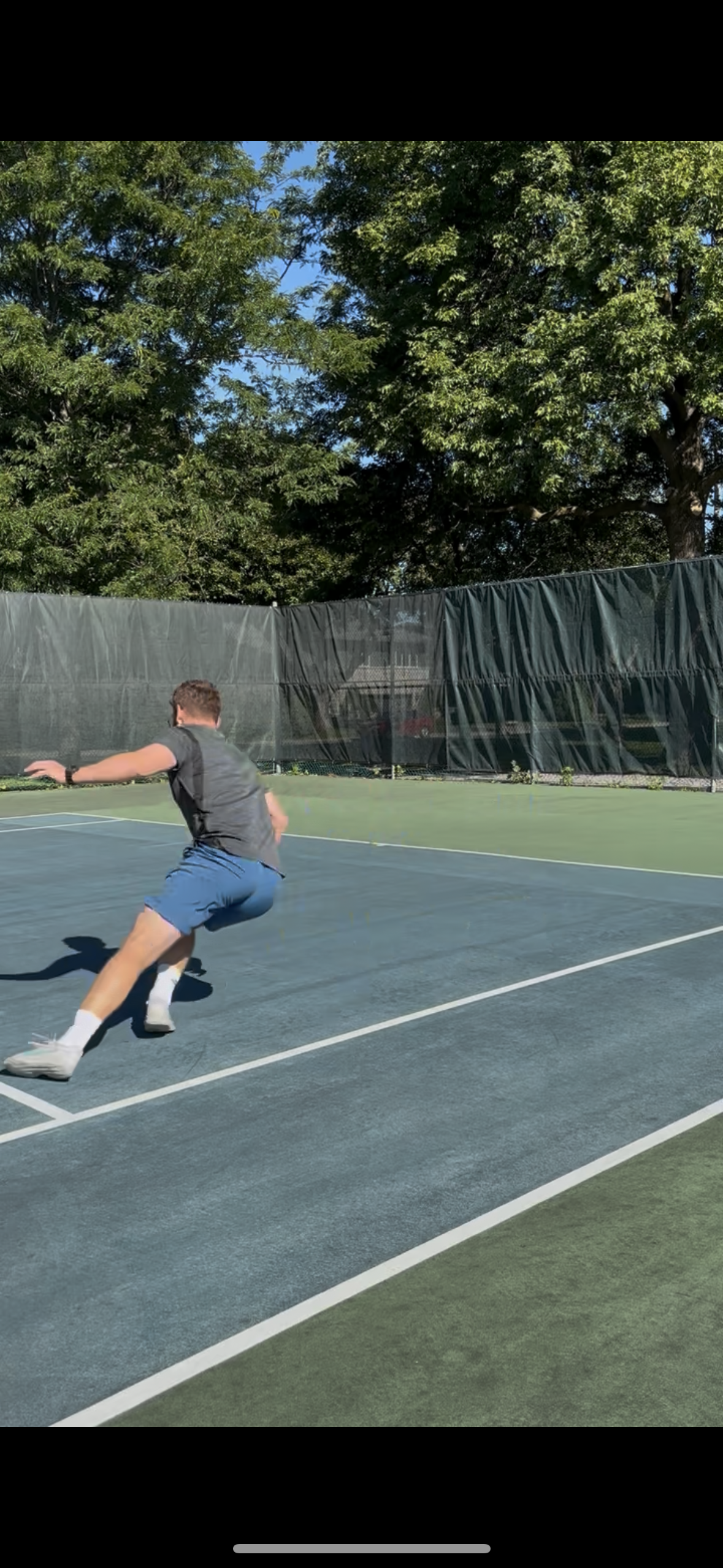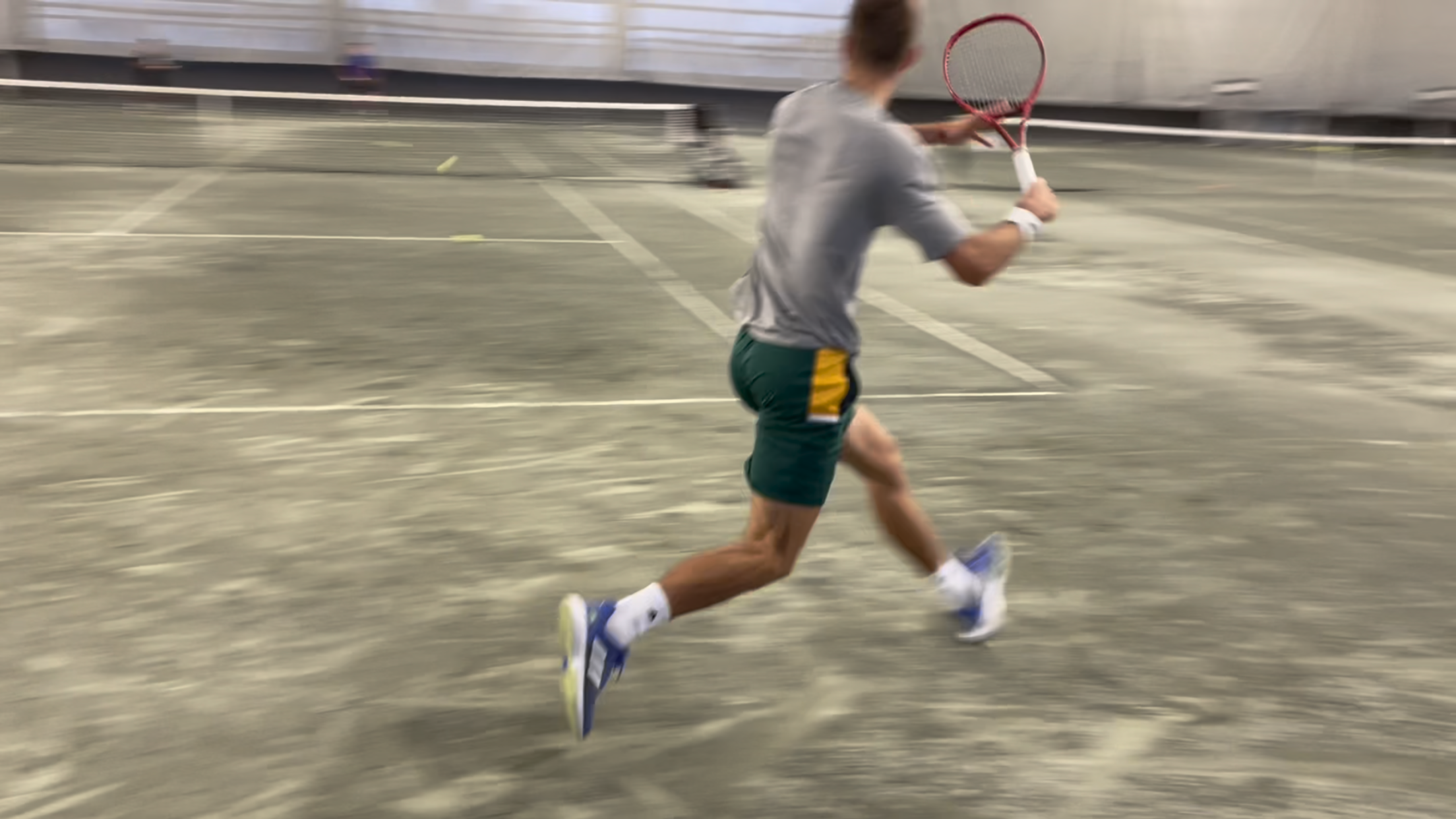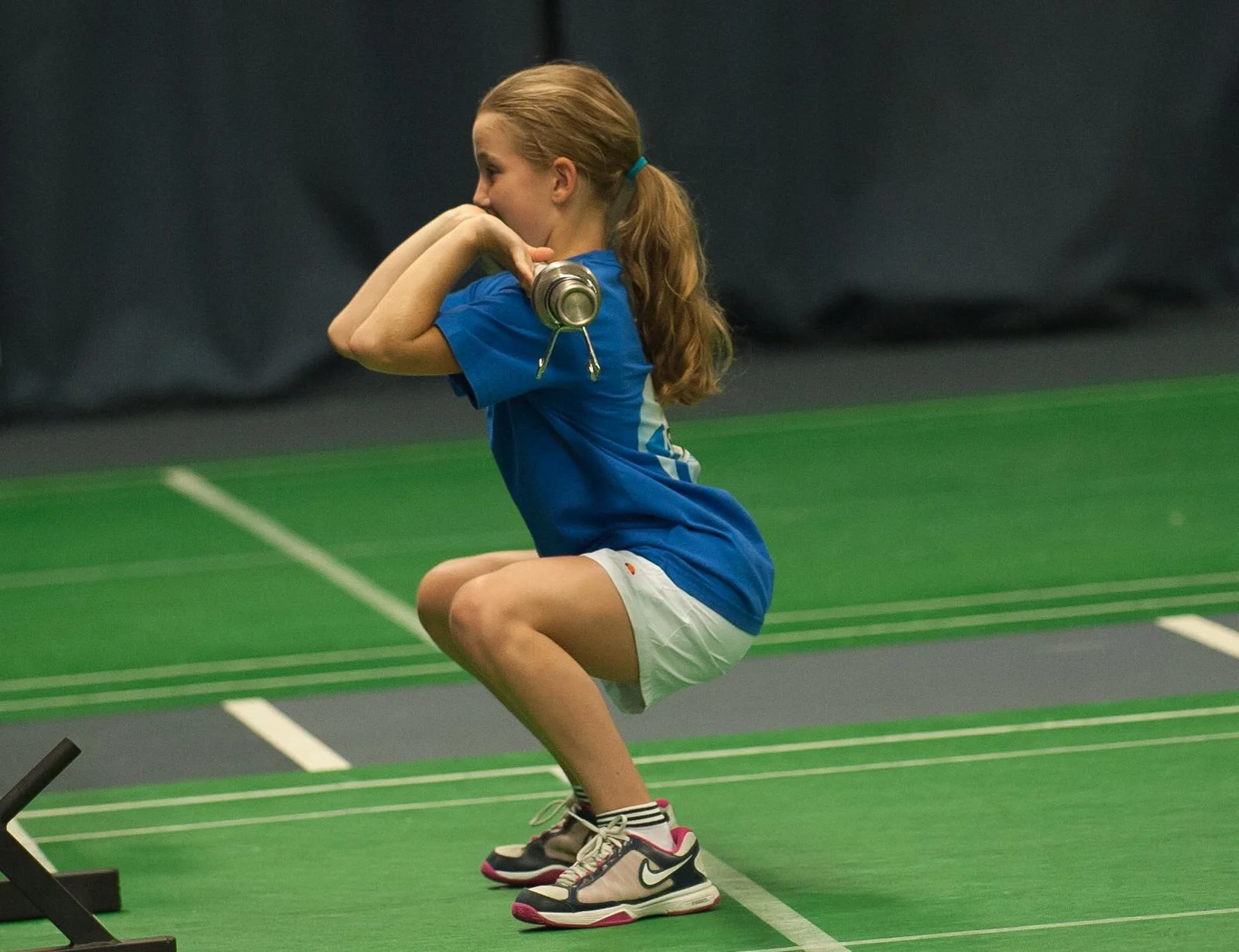In last week’s article, I wrote about easing into COD (change-of-direction) type of work. More specifically, I touched on COD drills and some of the best ways of incorporating them into training, especially in the early stages.
Viewing entries tagged
change-of-direction
For those that are unfamiliar with the term COD, it stands for change-of-direction. In the tennis world, things can get confusing as players and coaches often use the term ‘change direction’ when referring to hitting drills or on-court tactics. In other words, changing the direction of the ball (from a crosscourt exchange to a down-the-line switch, for instance). But that’s NOT what we’re talking about here.
I’ve spoken about COD in the past (you can check out THIS article for an extensive review). But in layman terms, it’s basically the instant when you move / orient your body from one direction, to another.
Below are 6 training modalities that I believe should never leave a tennis player’s off-court training program.
Whether a player is has a period without tournaments - or they’re in-between events - I believe the inclusion of these training types (in some form), is imperative to remain healthy and to perform at peak levels.
Let’s explore each in a little detail:
1 - Plyometric Training - If you only had to choose one training type to add to your off-court program, it would be plyometrics.
For the majority of tennis players, traditional ‘aerobic training’ is useless. That’s a pretty bold statement, I know. But hear me out.
In tennis, successful players need to be skillful. They must possess technical mastery across a number of strokes. They require a strategy. And tactics to implement said strategy.
Even though I have a bias towards being very prepared from a physical standpoint (as long time readers of Mattspoint would know), technique and tactics are still top priority.
’ve received many questions of late and thought it might be interesting to share some of them in a post, along with my thoughts on some key topics. These queries come from players, coaches and even tennis parents.
As you read along, keep in mind that a lot of scenarios are circumstantial, so there could be more than one answer to a particular query. That being said, I will give the most direct, evidence backed response, that I possibly can.
During the specific prep phase, as we’ve mentioned in previous sections, there is a greater emphasis on tennis play/practice - especially when compared with the general prep phase. Because of this, in my opinion, the need for conditioning work (in the traditional sense) is not as important - players, in effect, are getting a lot of their conditioning through tennis. Studies (Fernandez-Fernandez et al 2016, Kilit and Arslan 2018) are reaffirming this trend. See the ‘Learn More’ section for links to both studies.
By this point, I think we’re beyond prescribing tennis players to run long and slow (at least I hope we are). If you want to understand why this is the case, I urge you to read through this post, as I outline how the energy systems work and interact with one another.
Yet we still need players to be able to endure tough points, tight sets and long matches. No question about it. So how do we do this?
In last week’s post, we introduced the main physical training components that tennis players likely should focus on during the off-season. To get the best out of this week’s article, I suggest reviewing part 1 of this series first.
In this post, I’d like to tackle a couple key points. First, I’ll outline what a typical training week in the off-season might look like and how the overall cycle takes shape. Next, I’ll take a stab at commenting on the interplay and subsequent management of on-court and off-court training loads. Lastly, I will then offer some feedback - in other words, why it's my belief that training the various qualities outlined in last week’s article shouldn’t stop once the off-season cycle ends.
This is a 2-part post. In today's article, we’ll take a brief look at the most important physical qualities a player should focus on during the off-season and how to best train them. Part 2 will then focus on the application - how a microcycle might be organized, how it fits into the overall training cycle and the interplay between on and off court training.
This is the final part of a series of posts on change-of-direction (COD) in tennis…for now anyway. While we’ve touched on a number of key aspects of COD, researchers are only beginning to uncover the complexities of this athletic quality. This week’s post will briefly highlight why many in the tennis world believe that strength training doesn’t have a place when it comes to improving COD ability - and how the landscape has changed; and why straight line sprinting, although initially proposed as a key factor in COD ability, doesn’t really correlate after all. We’ll finish up with some practical examples of how purposeful strength training means can improve each phase of COD - the deceleration, planting and propulsive phases.
The ability to respond quickly and efficiently to an oncoming shot, is perhaps one of the most important qualities a tennis player must possess. This ability is predicated on a number of factors including anticipatory skills, perception skills - picking up cues from the other side of the net, judging the ball appropriately etc. - along with physical qualities, one of them being reactiveness. Further to that, it helps when a player has tremendous change of direction (COD) abilities. Why? Because the player that can recover more efficiently after their previous shot, has a better chance to not only better 'see' the next shot, but also has the ability to respond to that shot with less ‘emergency’ - a term many coaches use.
Many of you have probably heard of the acronym SAQ before. If not, it’s referred to as speed, agility & quickness. Coaches & trainers from a variety of sports use these terms liberally and interchangeably. This is a problem. In the tennis world, many believe that these 3 qualities are supremely important for the movement success of an elite player. Another problem. When referring to speed, are we referring to maximum speed? Or something else? In tennis, as we’ll see later in this post, a player almost NEVER reaches top running speeds. Is it relevant then? Quickness, on the other hand, has multiple issues. First, what does it even mean? Does it mean being explosive? Does it deal with having fast feet (which is a misleading term in itself). Prominent researchers disregard quickness as a sport science term anyway - their reasoning...it’s too vague.
How do different athletic qualities fit into the program of a tennis player? This is a complex question but one that deserves an answer. With information being so readily accessible these days, there are countless videos of players doing all kinds of things off the tennis court. But let me ask you this: just because a top 100 or 50 player is doing X or Y, does it mean it’s effective? Is it driven by some underlying scientific basis? Often times, it’s not. It’s a regurgitation of someone else’s training or a drill that was once seen before. If you’re a player, and someone is telling you to do squats on a stability ball…or ladder drills to develop agility and change-of-direction (COD) ability...seek alternatives as these are merely gimmicks that have little transfer to the aforementioned performance qualities.
This is the second post on testing athletic qualities in tennis. In the first post, I outlined what to use with tennis players to determine their strength abilities, explosiveness and acceleration. Check out that post here. In this post we’ll look at 4 other athletic qualities every tennis player should train - max speed, agility/change-of-direction (COD), power and endurance - AND how to test these qualities.
In a previous post, I outlined the physical demands during tennis play and briefly explained how these demands can be addressed through strength training. Many coaches believe that once you assess the demands, programming begins. Well…almost. Before we can begin putting a plan together, we must determine the specific needs of your athlete. This is generally done through various means, including - but not limited to - testing, questionnaires, conversation, observation, tracking and so on. This article will focus on physical testing as it relates to tennis play.
A few weeks back I wrote an article about strength training for tennis. More specifically, I wrote that physical training for tennis should stop focusing on “fancy drills” that may appear useful on the outside. Among other qualities (not the focus of this article), physical training for tennis should include a properly planned and executed strength training protocol. In this post, I’m going to outline the mechanical demands of tennis - this will hopefully provide a better understanding as to why strength training is important for tennis. And a brief application of strength training will be linked to each tennis demand to provide further context.

















